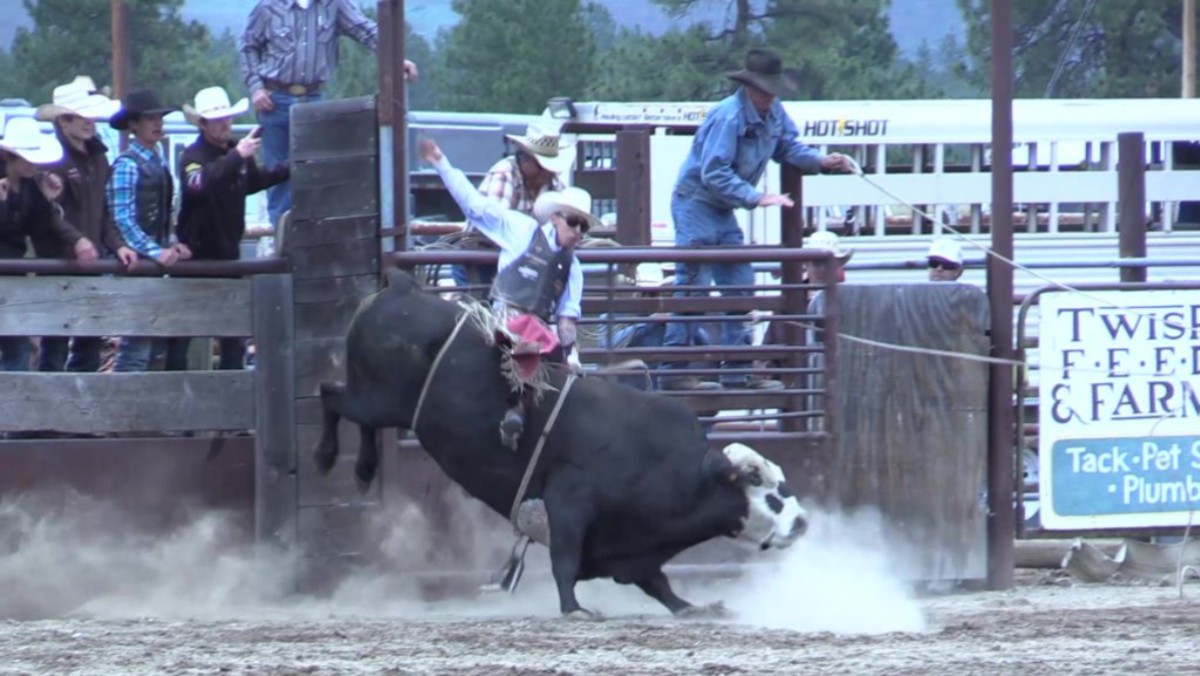
A Case Study
Narrative | Dramatic Features
Film Name: Twisp: The Power of Community
Genre: Documentary
Date: 2019
Director: Leslee Goodman
Producer: Leslee Goodman
Writer: Leslee Goodman
Cinematographer: Leslee Goodman
Production Company: Alchemy On Demand
Budget: $8,597.50
Financing: Funded by local sponsors & individual donors, and a $1500 grant from Artist Trust
Shooting Format: 1920×1080 HD
Screening Format: 1920×1080 HD or DVD
World Premiere: Twisp, WA, March 2019
Awards: Best Production Design, Global Nonviolent Film Festival 2020; Official Selection, Global Nonviolent Film Festival 2020; Official Selection, Utopia Film Festival 2019; Official Selection, Impact Docs, 2019; Official Selection, Docs Without Borders, 2019; Official Selection, WRPN.TV’s Short, Tight, and Loose Global Film Festival Competition, 2019; Official Selection, WRPN Women’s International Film Festival, 2019.
Website: http://twispmovie.com available to watch at http://globalcinema.online
indieactivity: Tell us about “who you are”?
Leslee Goodman (LG): I’m an emerging filmmaker, specializing in documentary films. I’ve been a storyteller all my professional life, but I never had a camera. I focused on the written word. When I got the chance to attend a 10-day documentary immersion course, I jumped at the opportunity to add visuals and music to narrative stories. That was in 2013, and I’ve been making short documentaries ever since—telling the stories of the people who inspire me and raising awareness about the issues that motivate me.
Watch the Trailer for Twisp: The Power of Community written, directed, and produced by Leslee Goodman
Introduce your film?
Leslee Goodman (LG): “Twisp: The Power of Community” is about a tiny town in rural Washington—population 937—whose residents work together to solve big problems—from reconciling whites and Natives to recovering from catastrophic wildfires to developing a new economy after the loss of the town’s major employer to building affordable housing. I let the residents speak for themselves, keeping myself, the writer/director, out of it, although I did occasionally need to weave their stories together through narration. I shot my interview subjects in their “natural environment” as much as possible, because that also tells the audience who these people are. For example, the founder of the local food bank is interviewed in his tiny, overflowing office; the art gallery directors are filmed in front of displayed art; a Native elder is interviewed on the land that means so much to him.
Tell us why you chose to write, produce, direct, shoot, cut/edit the movie? Was it financial, chance, or no-budget reason?
Leslee Goodman (LG): I wore nearly all of the hats in the making of the movie for three reasons: one, I enjoy the craft of filmmaking, and two, there was really no way to hire someone else because the film was shot sporadically over several years, as events happened. Third, I didn’t have the funds to hire much assistance. I’m forever grateful that Ray Singer agreed to consult with me on the story and make the finish edits—for very little compensation. He was instrumental in helping me pare the film down to just under 40 minutes—the limit for a film to be considered short. That meant I couldn’t tell all the stories I’d wanted to tell, but the stories we kept go together well and the film moves along at a nice pace.
Introduce your crew?
Leslee Goodman (LG): It was a fellow documentary filmmaker friend, Dulanie Ellis, who connected me to Ray, my story consultant, and finish editor. Ray (Raymond Singer – IMDb) produced her film, Ground Operations: Battlefields to Farm Fields (GROUND OPERATIONS: Battlefields to Farmfields | International Documentary Association). Ray is also an actor and writer, who is best-known for Mulan, Star Trek IV: The Voyage Home, and Iron-Jawed Angels. He watched my two-hour rough edit and created a road map that enabled us to hone in on the most compelling stories and edit the film down to something that would qualify as a short. In retrospect, I wonder why I didn’t go for a feature-length film, but I was acutely aware of budgetary constraints. Still, the only additional cost to make a feature-length documentary would have been for additional music licenses. I was very fortunate in that Rita Coolidge’s band, Walela, and the Native hip-hop artist Supaman, both let me use their recordings for very little money.
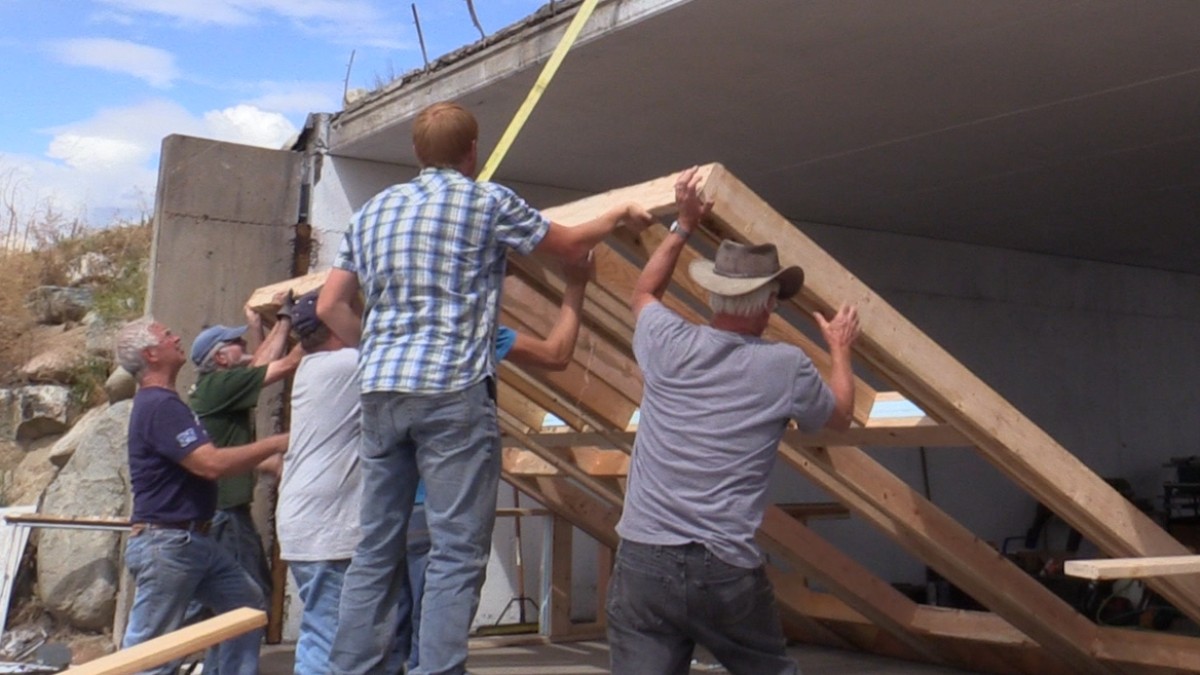
What are your personal experiences putting on all these hats? Tell us about the story, writing, and production?
Leslee Goodman (LG): I was introduced to the “story” of this film by living in this community. As an urban transplant, I was drawn to this place in part because of how engaged its residents are in the town’s well-being. I’d watched many of them swing into action in response to disasters and emergencies—and one of the first public events I attended there was a presentation on whether the Valley could feed itself. The house was packed—standing room only—with people who wanted to know, in the event of a disaster and the loss of outside assistance, could Valley residents survive and, if not, what did they need to develop to fill in any gaps?
The people I interviewed for my film were those I was particularly inspired by, so “writing” the film just became a matter of getting these wonderful characters to tell me their stories. My biggest challenges were with the technical aspects of sound and lighting. Of course, it’s difficult for one person to do everything simultaneously—interviewing, shooting, lighting, and sound—so when I fall short, I have to hope I can compensate in the editing booth. Sometimes your limitations force you into a creative solution you wouldn’t have thought of otherwise and it works brilliantly; other times, you just have to make do with less than what you’d hoped.
How did the story develop from the idea? And how did the story evolve into a screenplay? Why do this story? Do you have a writing process?
LG: I was motivated to make this film after the election of Donald Trump in 2016. I was shaken to the core that this man had won despite—or perhaps because of—a campaign that had been so divisive and ugly. (For those of you who might think I’m being unfair, I’m referring to his mocking of a reporter with cerebral palsy, his remarks about the good old days when protesters were “carried out on stretchers,” his characterization of Mexican immigrants as “criminals, drug dealers, and rapists,” to say nothing of his appalling treatment of women.)
I realized that I needed to do something to show another side of America. My community embodies that “other side,” a population of people who are willing to work together to solve problems, whether they agree with each other ideologically or not. I’ve always been impressed with how Twisp residents have not shied away from tackling big and difficult problems. In some respects, I think this is an attribute of rural communities—people don’t have the luxury of waiting for the federal government or outside “experts” to come in and fix things. If anything is going to get done, they have to do it themselves.
When you are in the habit of relying on your neighbors like this, you realize that what unites us is greater than what divides us. I wanted to make a film that reminded people—everywhere—of this fact.
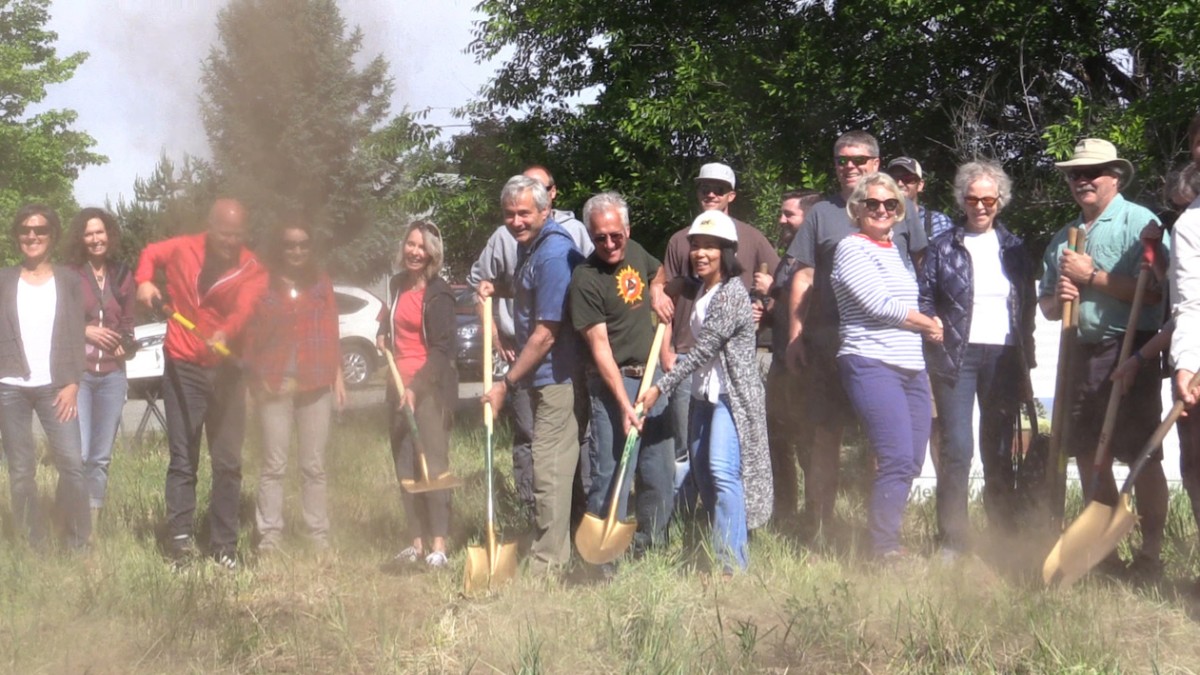
Let’s talk pre-production: take us through a timeline of how you started and ended it?
LG: For this film, pre-production was all about fundraising. I had already shot some of the footage—about wildfire recovery, farming and ranching, and Twisp’s annual Trashion Show—but I needed to shoot a lot more, to say nothing of the time I’d need to edit and then market the film. Even though I planned to shoot and edit the film myself, I knew there’d be other costs, such as the drone footage that established our location, music licenses, and the expertise of Ray Singer, my story consultant. I would have loved to hire an outside sound production studio but didn’t have the funds. I did find a non-profit fiscal sponsor, which enabled me to apply for several grants and to offer a tax deduction to all contributors, but in the end, it was the local Methow Valley community that provided most of the funding. (See what I mean about these people stepping up to get things done?)
What was your rehearsal process and period?
LG: Because this was a documentary, there really were no rehearsals. Once I had my camera set up and the subjects were miked, we just had a conversation. And then I edited my parts out.
How long did it take you to shoot the film?
LG: I shot the film over several years, interviewing people and community events as they happened—including the rebuilding of homes lost to wildfires, various art and cultural performances in the Valley, the distribution of weekend food for low-income school kids, an annual bull drive to winter pastures, rodeos, harvests, and so on. So each day’s filming might only take a few hours—and the next film day might not be for several weeks or even months. This being a documentary, people weren’t really expected to “perform,” just to be themselves…which is often harder! The few times that I did go back and try to get a better take, with less background noise, it was hard to capture the authenticity of the first, spontaneous delivery.
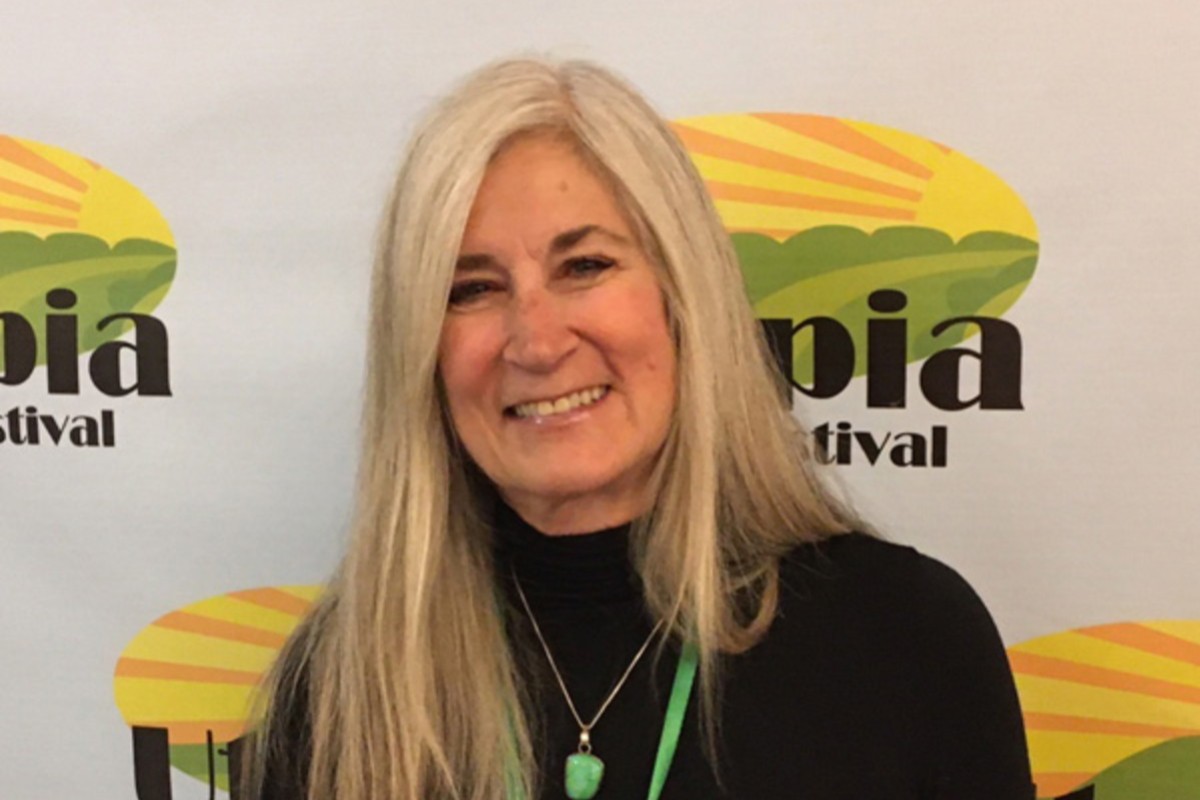
During the film production, what scene was the hardest to shoot? And why?
LG: The most difficult scenes to shoot were always the interviews taking place in a background of ambient noise. For example, I loved the setting—a shady park—for our interview with the Twisp Mayor, but every so often a truck on the highway a block away would roar by and completely obliterate the Mayor’s voice. Another outdoor interview was interrupted by a gang of motorcyclists revving their engines in the parking lot—as well as by mosquitos that my poor interview subject kept having to swat away.
Then, at other times, I was interviewing people indoors at noisy community events, with no way to control the background noise in those situations, either. But that’s the nature of documentaries; you’re filming life as it happens so you can’t control for everything.
What worked better in this latest production that mightn’t have worked so well in the last one you did?
LG: One of my favorite scenes in the film is the rousing Trashion Show at the end. It’s a high-energy event in which models catwalk down the runway wearing outlandish fashions made from recycled materials. The crowd loves it and it’s always fun to shoot. Plus, I always have two cameras when I shoot it—my husband volunteers to be the second cameraman—and that makes such a difference in keeping things interesting.
What were the advantages and disadvantages of the way you worked?
LG: This was a low-budget production. I sometimes joke that it was made with a nano-budget: under $10,000. A tight budget is both a blessing and a curse. There wasn’t money to hire outside assistance—so I got to do everything myself, which I enjoyed. On the other hand, there wasn’t money to hire outside assistance—so I had to do everything myself—even if I was not always the most skilled. In other words, if I’d had money, I could have hired people with more experience and expertise.
I recently saw the fantastic documentary, Minding the Gap, by the first-time film director Bing Liu. Bing started filming the subjects of his film when he was 13. He had a rough cut that got him a Kartemquin Fellowship, where he worked on the film another year or so. When he showed the film at Sundance, it got a standing ovation—and THEN the film got supported by ITVS, PBS, and picked up by Hulu. The credits showed something like five colorists and several people working on sound. When the final film was released it got nominated for an Academy Award for Best Documentary. So yes, he made an excellent low-budget movie—which then got invested in by people who were able to make the film that much better. I’d love to go that route! Who wouldn’t?
Still, if I had to choose between making a low-budget film, or not making the film at all, I’d go with low-budget every time. The important thing is to get the stories told.
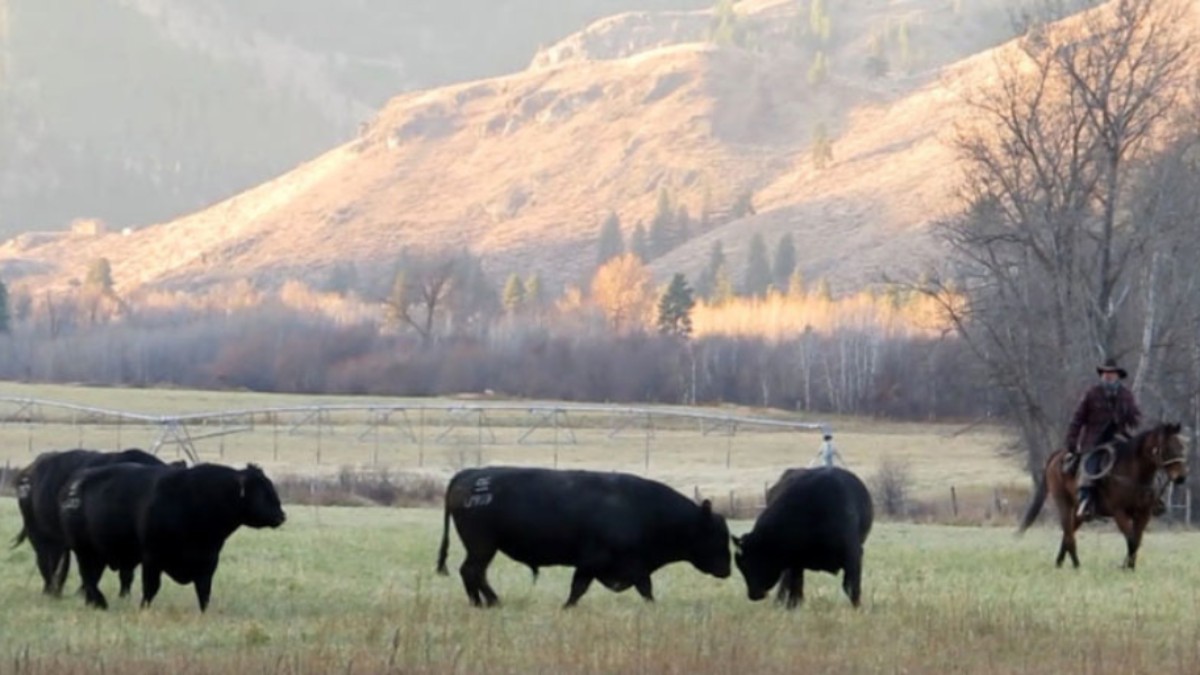
What was the experience like of working with the crew?
LG: I would have loved to have a small shooting crew—particularly someone to handle lighting and sound, and a second camera is always nice.
The film looks stunning. How did you get such a good look?
LG: That is so kind of you to say. I’m fortunate to live in a place that is stunningly beautiful and was able to incorporate some drone footage and other panoramic shots that give viewers a glimpse of it. Also, since I was the only one shooting—and since even I wasn’t getting paid—I could always go back and get additional scenic shots if I needed them. Of course, that’s not the case with interviews. People don’t generally have the patience to sit for you a second time, so you’d better capture what you need on the first sitting.
When did you form your production company – and what was the original motivation for its formation?
LG: I formed my company, Alchemy On Demand, as a boutique PR, marketing, and fundraising agency before I started making films. Filmmaking became another service I offered my clients, most of whom are non-profits, authors, or healthcare providers seeking to get their message to a wider audience. For example, I worked for a year with the Okanogan County Long-Term Recovery Group making videos about people who lost their homes to the state’s worst-ever wildfires—and about people who were volunteering to help them rebuild. The point was to raise funds and inspire other volunteers to get involved. We were successful at raising over a million dollars and rebuilding two dozen homes.
What was the first project out of the gate?
LG: My very first project was an eight-minute film about a man who owned a goat dairy. I intended it to become part of a series about “knowledge keepers,” because many rural people retain knowledge about how to do things that urban dwellers have lost. Things like how to milk a goat, make cheese, shoe a horse, deliver a cow, slaughter a hog, harvest and mill grain, make bread, shear a sheep, spin yarn, weave fabric, and on and on. But this man—the dairy farmer—had also recently lost his wife to cancer. The film became about that—about their life together in the Methow Valley and what it was like to lose her partnership. I was honored to get to hear and record his story during such a painful time.
What about independent filmmaking and the business do you still struggle with?
LG: The most difficult aspect of independent filmmaking is fundraising and making a living. After that, the biggest challenge is getting the film seen in the larger world. I’m forever grateful to Global Cinema Online for accepting my film into their Global Nonviolent Film Festival and then picking it up for distribution!
Where do you think your strengths lie as a filmmaker?
LG: I think my strength is as an interviewer, empathizing with my subjects and drawing them out so that they will talk in front of a camera. I also really enjoy editing—identifying the key messages and—often sadly—cutting away the rest. I also love finding the perfect piece of music to accompany visuals and narrative. The right music really underscores the emotional reaction you’re hoping to inspire.
Let’s talk finance: How did you finance the film?
LG: I was able to raise the bare minimum I needed to make the film through grants and donations. I also self-funded expenses like film festival entries and promotional materials.
How much did you go over budget? How did you manage it?
LG: I didn’t have the luxury of going over budget. Ha-ha. I didn’t make the film as a profit-making endeavor, although that would have been nice. My motive was inspiring people to get along.
How important is marketing? Talk about the festival tour? Do you think a project can make a dent without it nowadays?
LG: Marketing is second only to production. Without marketing your film you’re only talking to yourself or singing in the shower. Stories need to be told—and heard! I love the festival circuit, which, unfortunately, was upended by Covid-19 in 2020. It has also become extremely competitive. For example, the 2019 Palm Springs ShortFest received something like 8,000 submissions and was able to screen 300 of them. I’ve no doubt that the biggest and most popular festivals, like Sundance or TIFF, receive and review even more to screen only a fraction.
Unfortunately, I discovered that a 40-minute film, though technically a short film, is ill-suited to the festival format. That’s because festival programmers typically like to put five to six short films together in a single program. A 40-minute film would dominate the program, leaving time for only one or two others.
However, 40 minutes turns out to be a great length for an in-person screening that uses the film as a conversation-starter, followed by a speaker, a panel, and an audience discussion about the film topic. We used that format to advantage on half-a-dozen occasions before Covid-19 shutdown public gatherings. It was very gratifying to see communities come together after the film and be so excited about talking to each other that we had to shoo them out at the end of the evening. So, in-person screenings, marketed by means of a press release, posters, and emailings by the sponsoring or hosting organization, were our most effective marketing strategy. If one can get an interview on local radio in advance of the screening, that’s effective too. Longer-term, it’s crucial to get picked up by a distributor so that audiences have a chance to find the film in perpetuity. That is why we were so thrilled to be picked up by Global Cinema Online!
Where can the film be watched today?
LG: It is available worldwide at globalcinema.online – a unique streaming channel for nonviolent films. I was offered a contract with them after the film’s participation at the Global Nonviolent Film Festival. Watch TWISP: THE POWER OF COMMUNITY.
What do you hope audiences will get from the presentation of your film?
LG: I hope audiences will be inspired by our town of quirky characters, who nevertheless accomplish pretty great things. I hope audiences will realize that they, too, probably live in a world of quirky characters worth knowing and even working with. Our world has huge problems that need solving. We can all pitch in and do our share.
What else have you got in the works?
LG: I am producing an hour-long documentary on the role of grizzlies in Native American life and spiritual practice. The Indigenous people of North America have coexisted peacefully with grizzles for millennia. That wasn’t because of weapons, but due to a relationship built on respect—and even love. Theirs is a completely different approach to environmental stewardship—and one that we all need to understand and adopt if we’re to survive on this planet. We’re still in the fundraising, pre-production phase. Anyone who is interested can see the trailer on the film’s website, which is also where you can find donation information: www.aplaceforgrizzlies.com.
Tell us what you think of the Case Study for Twisp: The Power of Community. What do you think of it? Let’s have your comments below and/or on Facebook or Instagram! Or join me on Twitter.
Follow Leslee Goodman on Social Media
Website
Facebook
LinkedIn
Instagram
Vimeo
MORE STORIES FOR YOU









